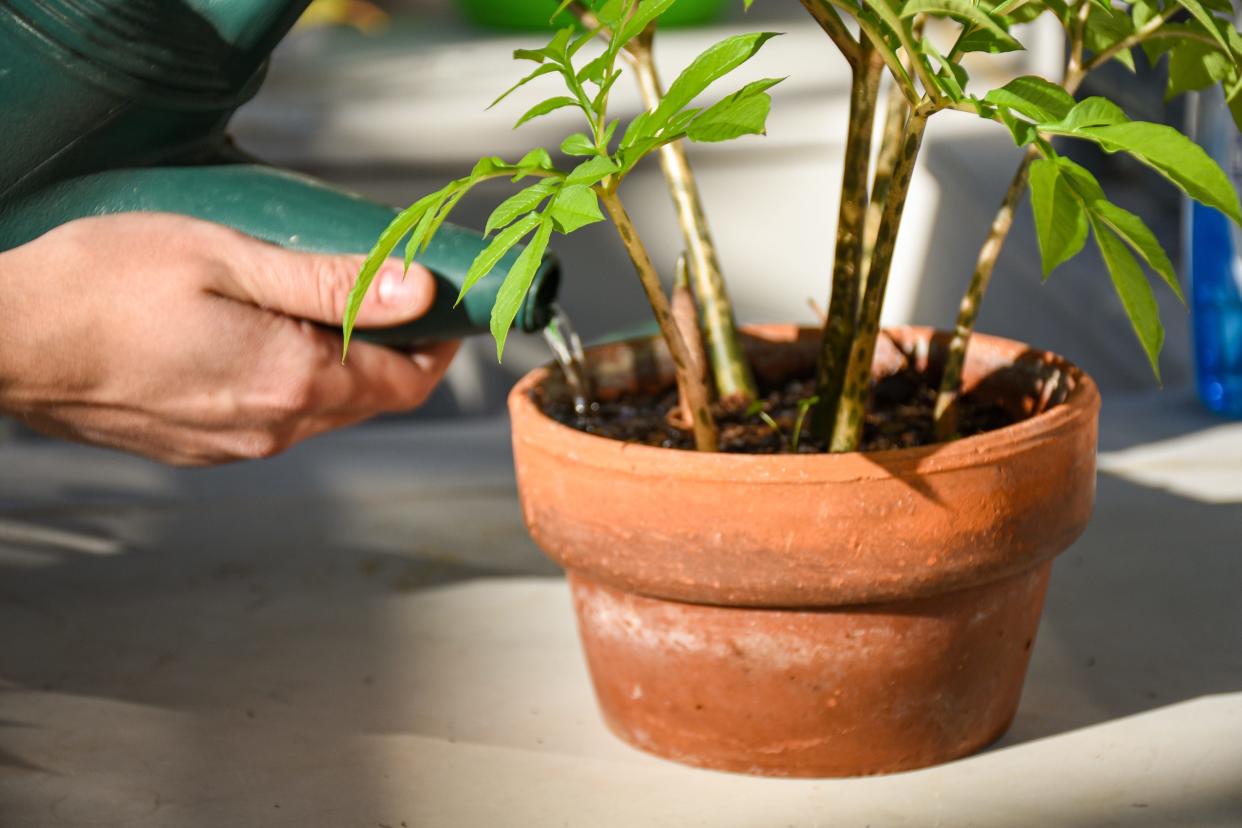Gardening Central Mass.: Beneficial bugs and the plants that love them

It still surprises me how many plant people are obsessed with insects. After Doug Tallamy’s first book, "Bringing Nature Home," was published in 2007, the plant-obsessed people in my life became bug-obsessed people overnight. Dr. Tallamy’s work supported the movement toward using more native plants in our gardens by revealing how important native plants are in supporting wildlife. It’s a simple premise, really. Native plants support insects, and birds feed insects to their young. Plant more native plants, support more birds and in turn other wildlife.
When I first started studying horticulture, the “all bugs are bad” camp had more members than the “this bug is really cool and such an important pollinator” camp. Now it’s completely flipped. Horticulture professionals are more likely to celebrate insects than call for their heads and reach for a pesticide. Home gardeners can follow suit by embracing the role beneficial organisms (insects, fungi, bacteria) play in our gardens. When used as biological controls, beneficial organisms can help us manage pests outdoors and in.
What is a biological control?
Many of us have vivid memories of caterpillar droppings raining down on backyard picnics during the mid-1980’s invasion of spongy moth (formerly gypsy moth, Lymantria dispar). Then after a few strange summers, the moths magically disappeared. For more than thirty years, spongy moth was barely a concern in the northeast, thanks to a fungus (Entomophaga maimaiga) and a virus (Nucleopolyhedrosis virus) that kill developing caterpillars. Drought in New England a few years ago brought spongy moth back for a season or two. Their disappearance again demonstrates the power of natural predators to manage harmful insect pests.
Another local insect pest successfully managed by biological controls is winter moth (Operophtera brumata), an introduced moth from Europe that emerges from the soil to lay eggs around mid-November. Eggs overwinter, and in early spring, newly hatched caterpillars feed on many forest trees, including maple, oak, cherry, beech, and hickory. University of Massachusetts entomologists released a tachinid fly (Cyzenis albicans) whose larvae enter the gut of developing winter moth caterpillars and parasitize them. Winter moth is now kept in check and no longer considered a significant forest pest.
Biological controls are also used to manage invasive plant species. Purple loosestrife (Lythrum salicaria) colonizes sensitive wetland areas throughout North America, harming biological diversity. Because purple loosestrife impacts wetlands, where it forms dense monocultures, it can be difficult to control using conventional methods. Fortunately, a pair of beetles (Galerucella calmariensis and G. pusilla) that feed exclusively on purple loosestrife can help manage its populations.
Using biological controls at home
Biological controls can be a sustainable way to manage a wide range of plant pests in our home gardens. As with any pest control, the most important first step is identification. Without accurately identifying the pest, any effort, biological or otherwise, may be fruitless at best or damaging at worst.
For those looking for the perfect lawn, milky spore is a bacteria (Bacillus popilliae) that kills grubs. A single application of milky spore can create a self-sustaining population of soil bacteria that will control grubs for decades. Mosquito larvae can also be controlled with bacteria (Bacillus thuringensis israelensis).
Many common houseplant pests can be managed using biological controls. Unfortunately, many biocontrol agents aren’t necessarily welcome indoors. For as much as I love ladybugs — an excellent biocontrol against aphids — I’d rather not have them in my living room. One pest that can be effectively managed indoors using biological controls is fungus gnats. The larvae of these pesky flying insects feed on organic material in soil and damage plant roots. Fortunately, beneficial nematodes (Steinernema feltiae) can be applied to potting soil to keep fungus gnats at bay. You can check with the UMass Extension office, a regional agriculture and gardening resource, for tips on where to find beneficial insects for your home and garden.
We’ve moved well beyond the days of better living through chemistry, when the only good bug was a dead bug. Whether you’re a horticulture professional, a gardener, or a houseplant enthusiast, there are countless examples of better living through biodiversity. And plenty of good bugs we can embrace to help us control the bad ones.
Gardening Central Mass. is written by the team at New England Botanic Garden at Tower Hill. Located on 171 acres in Boylston, New England Botanic Garden is one of the region’s top horticultural resources. All year long, garden visitors experience the wonder of plants, learn about the natural world, and make joyful connections. There is so much growing at the garden. Discover it today at www.nebg.org. The column will be published on the third Sunday of the month.
This article originally appeared on Telegram & Gazette: Gardening Central Mass.: Some bugs are beneficial to plants
